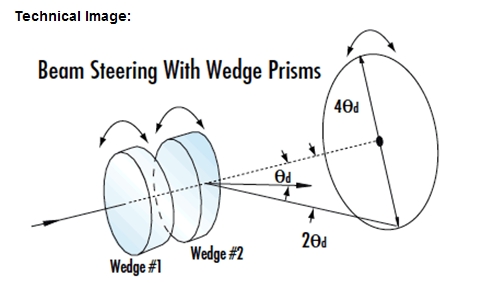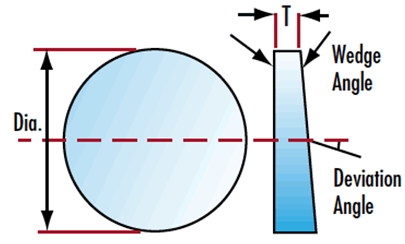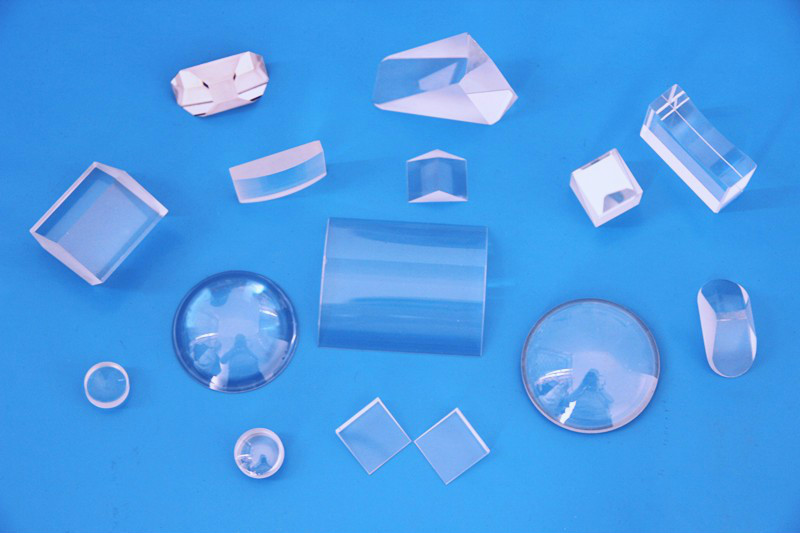Crystal,sapphire,BK7,Quartz prism,optical wedge prism
Wedge prisms have similar function with optical windows. They all can be used as isolating components. Wedges may be used to produce a small deviation, which don't allow return to the source.
Prisms are blocks of optical material with flat polished sides arranged at precisely controlled angles to each other, which deflect,
deviate and rotate beams of light as well as dispersing their wavelengths. We could provide many kinds of high precision prisms,
including as follows:
Penta Prism
Beamsplitter Penta Prism
Dove Prism
Right-Angle Prism
BK7 Wedge
Fused Silica Wedge
Corner Cube Retroreflector
Anamorphic Prism
Technical Parameters
|
1
|
Material
|
Bk7,Fused silica,Sapphire,Quartz,optical glass
|
|
2
|
Dimension tolerance
|
+0.0/-0.2mm
|
|
3
|
Wedge Angle
|
+/-1arc min
|
|
4
|
Surface quality
|
60-40 scratch and dig
|
|
5
|
Flatness
|
lambda/4 at 632.8nm
|
|
6
|
Coating
|
Ravg<0.5%@broadband wavelength range,
R<0.2%@single wavelength
|
|
7
|
Bevel
|
0.2-0.5mm*45degree
|


Features:
1° to 15° Beam Deviation at 632.8nm, Ideal for beam steering.
Applications:
Beam steering, Projection Systems, Imaging Systems, Laser Measurement Systems, etc.
Description:
Wedge prism is optical element with plane-inclined surfaces; usually the faces are inclined toward one another at very small angles. It diverts light toward its thicker portion. By selecting appropriate wedge it is easy to create precise beam deviation without affecting other beam parameters. If two wedges are used together with sloping surfaces in close proximity it is possible to produce a continuous variation of beam deviation by counter - rotating the wedges.
Wedge prisms can be used individually to deviate a laser beam a set angle, or two wedge prisms can be used together for beam steering applications. A single wedge prism's ability to deviate the angle of an incident beam is measured in Diopters with 1 diopter deviating the beam 1cm at a 1m working distance.


